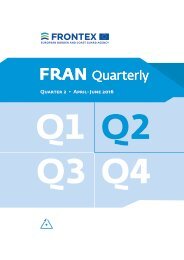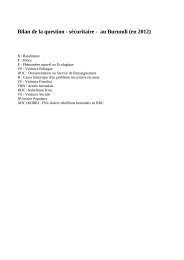You also want an ePaper? Increase the reach of your titles
YUMPU automatically turns print PDFs into web optimized ePapers that Google loves.
KATHERINE ZIMMERMAN<br />
IS leadership in Iraq and Syria directed and supported the effort to expand<br />
into Yemen in this period. It commissioned a Saudi Arabian national, Bilal<br />
al-Harbi, to gather pledges of allegiance to the Islamic State. 3 Harbi was in<br />
direct communication with the core leadership by September 2014 and was<br />
probably behind the new Yemeni group’s decision to pledge allegiance to IS<br />
leader Abu Bakr al-Baghdadi that month. 4 He would become the leader of<br />
the Yemeni branch. It is quite probable that the core group deployed additional<br />
individuals from Iraq and Syria to Yemen, similar to the way in which<br />
it built the Libyan branch.<br />
The Islamic State made its initial inroads into Yemen through Salafi-jihadist<br />
clerics and defections from AQAP. A prominent AQAP-affiliated cleric,<br />
Mamun Hatim, was one such cleric who displayed support for IS. 5 He probably<br />
facilitated an Ibb-based recruiting network for the group, though he<br />
remained connected to AQAP as well. 6 The Islamic State’s appeal produced<br />
a preliminary surge of support. It offered more money than AQAP, held the<br />
narrative of victory based on its success in Iraq, and offered membership in<br />
a global community. 7 The group’s call to immediate action differed from<br />
AQAP’s cautious and tempered approach. 8 The Islamic State grew primarily<br />
where AQAP was recruiting and not attacking, possibly drawing on the<br />
frustrations of AQAP supporters who wanted to get in on the action. 9 Some<br />
of its cells (wilayat, or provinces) also split from AQAP. 10<br />
The group brought its usual playbook to Yemen: driving sectarian warfare<br />
to break the state and mobilize the Sunni behind the Islamic State. Its<br />
first major attacks in Yemen struck two “Houthi” mosques in Sana, Yemen’s<br />
capital, 11 its militants attacked Zaydi targets throughout spring and summer<br />
2015. The group shifted its main effort from sectarian attacks to targeting the<br />
Saudi-led coalition forces and the Yemeni government and military forces as<br />
they began to rebuild the central Yemeni state in south Yemen. It launched<br />
four simultaneous suicide car bombs against coalition and government sites<br />
in Aden on October 6, 2015. 12<br />
PROSPECTS OF THE ISLAMIC STATE IN YEMEN<br />
Despite these initial successes, the Islamic State’s strategy is failing. It uses<br />
violence at levels outside of Yemeni norms, has a foreign leadership body in<br />
Yemen, and refuses to work within local customs. Its targeting of noncombatants,<br />
particularly through the mosque bombings, is far outside the acceptable<br />
norms in Yemen, generating backlash. AQAP, by contrast, avoids civilian<br />
casualties and has issued formal apologies when its attacks, such as a May<br />
26






